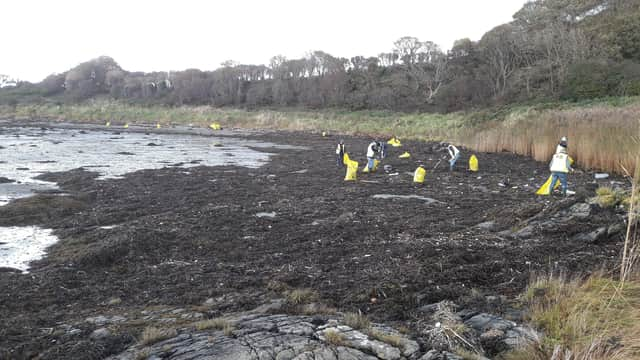‘The Terrible 10’ revealed - the most common items of litter found on NI’s coastline


Six of the top 10 most common littered items on local beaches were found to be derived from single-use plastics, a new report reveals.
There were also many short pieces of string and rope, which may have originated from fishing activity.
Advertisement
Hide AdAdvertisement
Hide AdThe Marine Litter Report 2019 has revealed ‘The Terrible 10’ most common items of litter discovered on Northern Ireland’s coastline.
The list details the average proportion of each type of litter found within the survey.
1 Plastic and polystyrene pieces 24%
2 String and cord diameter 12%
3 Plastic and polystyrene pieces 12%
4 Glass (other than bottles) 9%
5 Caps and lids 5%
6 Rope 4%
7 Drinks (plastic bottles, containers, drums) 4%
8 Drinks (metal cans) 3%
9 Food (crisp, sweet, food and sandwich wrappers) 3%
10 Food (fast food containers, pots, tubs, sachets) 2%
The report states: “Over the past six years the results for the marine litter surveys have fluctuated from year to year with an average of 5,080 items recorded per kilometre in 2019. This equates to five pieces of litter per step.
“Litter is still being found in large quantities across the survey beaches in Northern Ireland showing that there is still a need for local government, NGOs and the public to work together to tackle the problem.
Advertisement
Hide AdAdvertisement
Hide Ad“Although this year’s overall litter count is down we must continue to work together to maintain this trend.”
It continues: “It can be seen that six of the top 10 items found on average were single use plastics and two of the categories are considered to be
commonly used as fishing gear.
“This demonstrates a need to change the attitudes of the population on single use plastics, especially when it comes to drink and food containers.
“These items are not just a problem when they are whole but as they break down into smaller plastic pieces they become more difficult to manage, harder to remove from the environment and increasingly likely to be ingested by wildlife.”